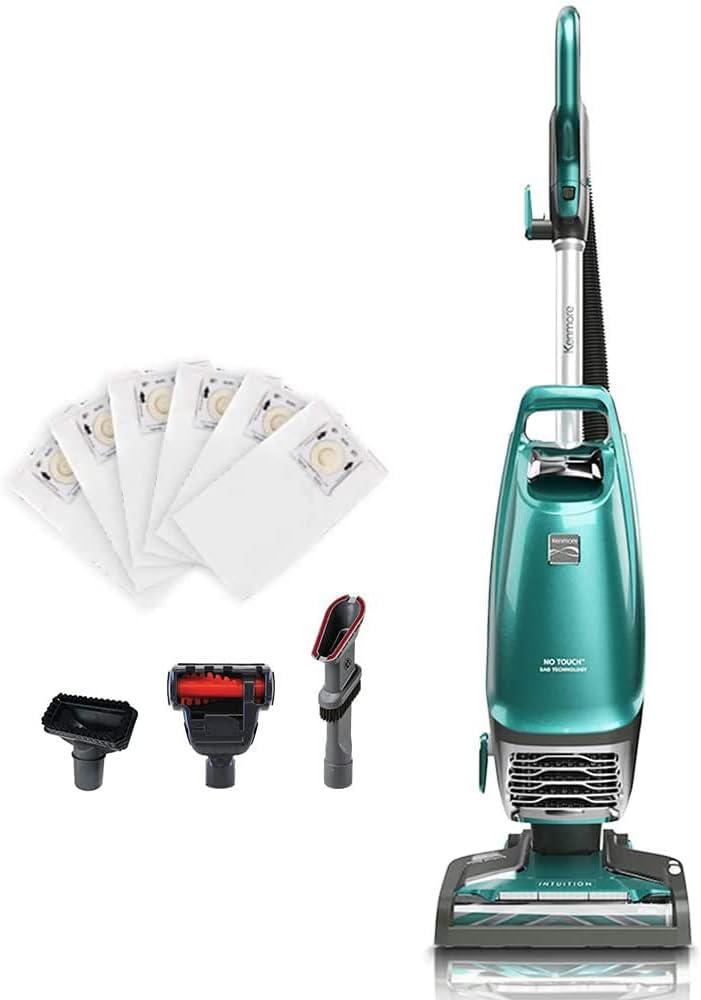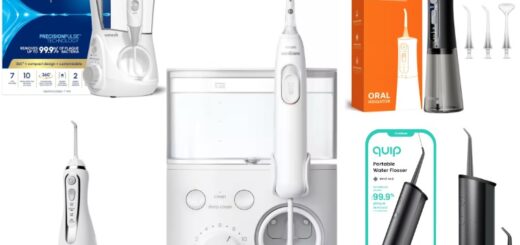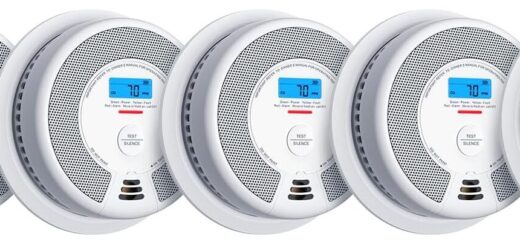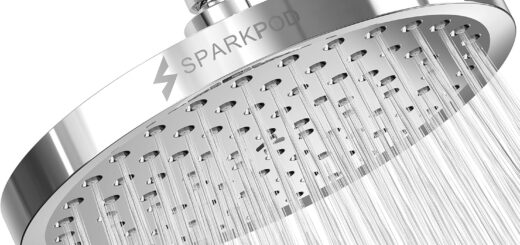Vacuum Cleaner Buying Guide: Expert Analysis of Technology, Performance, and Ratings
Part I: The Buyer’s Guide – Top Recommendations by Category
This section combines extensive analysis from leading independent testing labs and real-world user feedback to provide concrete, data-backed recommendations. The models highlighted here represent the best options currently available across the primary vacuum archetypes, balancing performance, features, and value.
1.1 Best Upright Vacuums: For Deep Carpet Cleaning and Large Homes
Top Tier (Performance & Features): Shark Stratos / Shark PowerDetect

These models consistently top the rankings for their powerful suction and innovative features. They use a dual-brushroll system to effectively clean both hard floors and carpets while resisting hair wrap. The Powered Lift-Away feature adds canister-like versatility.
Top Tier (Power & Durability): Dyson Ball Animal 3

For sheer, raw power, the Dyson Ball Animal 3 is in a class of its own. It generates immense suction to pull embedded dirt and pet hair from the deepest carpets, making it the champion for homes that require the most intensive carpet cleaning.
Best Value: Shark Navigator Lift-Away NV360 / Eureka QuickShift OmniVerse

The Shark Navigator Lift-Away NV360 is a perennial favorite, offering the game-changing Lift-Away feature and a sealed HEPA system at an affordable price. The Eureka QuickShift OmniVerse is another top value contender with a lift-away design and strong performance.
Best Bagged Option: Kenmore Intuition

For those who prioritize the hygiene of a bagged system, the Kenmore Intuition is a standout. It combines powerful suction with a Lift-Away design and a HEPA-certified bagged system, effectively trapping dust and allergens.
| Model | Type | Weight | Dustbin/Bag Capacity | Filtration | Key Features | Est. Price |
|---|---|---|---|---|---|---|
| Shark Stratos Upright | Bagless Upright | 16.3-17.3 lbs | 1.4 – 1.6 L | Sealed HEPA | DuoClean PowerFins, Powered Lift-Away, Anti-Tangle, Odor Neutralizer | $450 – $500 |
| Dyson Ball Animal 3 | Bagless Upright | 17.3 lbs | 0.45 gal (1.7 L) | Whole-Machine Filtration | Extreme Suction, Ball Technology, Detangling Motorbar | $400 – $500 |
| Shark Navigator Lift-Away NV360 | Bagless Upright | 15.96 lbs | 0.85 L | Sealed HEPA | Lift-Away Canister, Swivel Steering, Brushroll Shutoff | $160 – $200 |
| Kenmore Intuition | Bagged Upright | 14 lbs | N/A (Uses HEPA Bags) | Sealed HEPA | Lift-Up Canister, Pet HandiMate Tool, LED Headlights | $180 – $200 |
1.2 Best Cordless Stick Vacuums: For Versatility and Everyday Use
Top Tier (Performance & Features): Dyson V15 Detect / Gen5detect

The Dyson V15 and Gen5detect are the benchmarks for cordless vacuums, delivering exceptional suction, sophisticated HEPA filtration, and intelligent features. The Fluffy Optic cleaner head, which uses a laser to reveal microscopic dust, is a transformative feature.
Top Tier (All-Around Value): Shark Stratos Cordless / Shark PowerDetect Clean & Empty

Shark’s high-end cordless models offer competitive performance with unique features at a lower price. They feature dual-brushroll heads, flexible wands for reaching under furniture, and automatic suction adjustment. The PowerDetect model adds the convenience of a bagless auto-empty charging dock.
Best on a Budget (Unbeatable Value): Eureka ReactiSense 440

In lab tests, the Eureka ReactiSense 440 delivered the highest average debris pickup score of any cordless vacuum tested, outperforming premium models from Dyson and Shark. Priced under $200, it represents an unparalleled value for those who prioritize raw cleaning performance.
Best for Large Homes (Battery Life): Dreame Z30

The Dreame Z30 delivers an “unprecedented” tested battery life of 110 minutes on its standard setting, nearly double that of many competitors. This makes it the standout choice for users with large homes who want to clean in a single session.
| Model | Type | Weight | Dustbin Capacity | Filtration | Key Features | Est. Price |
|---|---|---|---|---|---|---|
| Dyson Gen5detect | Cordless Stick | 7.72 lbs | 0.2 gal (0.77 L) | Sealed HEPA | Extreme Suction, Laser Dust Detection, Piezo Sensor, On/Off Button | $950 – $1,050 |
| Shark Stratos Cordless | Cordless Stick | 8.8 lbs | 0.8 L | Sealed HEPA | DuoClean PowerFins, MultiFLEX Wand, Clean Sense IQ, Odor Neutralizer | $300 – $500 |
| Eureka ReactiSense 440 | Cordless Stick | 6.4 lbs | 0.5 L | HEPA | Top-Tier Debris Pickup, Smart Floor Sensors, LED Headlights | $180 |
| Dreame Z30 | Cordless Stick | N/A | N/A | HEPA | 110-Minute Runtime, Strong Suction, LED Headlights | $500 |
1.3 Best Robotic Vacuums: For Automated Maintenance and Smart Homes
Top Tier (Overall Performance & Features): Roborock S8 Pro Ultra / Dreame L50 Ultra

These flagship models represent the state-of-the-art in robotic floor care. They combine powerful suction with advanced mopping and feature highly automated docking stations that empty the dustbin, wash and dry the mops, and refill the water tank for a truly hands-off experience.
Top Tier (Mopping & Innovation): Ecovacs Deebot X9 Pro Omni / Ecovacs Deebot T30S Combo

Ecovacs is a top-tier competitor with innovative models like the square-bodied X9 Pro Omni for better corner cleaning and the T30S Combo, which pairs a robot with a cordless stick vacuum that both use the same comprehensive dock.
Best Value (High-End Features for Less): Roborock Q Revo / Yeedi M12 Pro+

These models bring high-end features like self-washing mops and auto-empty docks to a more accessible price point. The Q Revo is praised for its reliable performance and feature-packed dock, representing an exceptional value.
Best for Obstacle Avoidance: iRobot Roomba j-Series (j7+)

For homes with pets or clutter, iRobot’s j-Series is the most reliable choice. Its AI-driven, camera-based system is the gold standard for identifying and avoiding unpredictable hazards, and its P.O.O.P. (Pet Owner Official Promise) guarantees it will avoid solid pet waste.
| Model | Type | Navigation | Mopping System | Dock Functions | Key Features | Est. Price |
|---|---|---|---|---|---|---|
| Roborock S8 Pro Ultra | Robot Vac & Mop | LiDAR, 3D Obstacle Avoidance | Vibrating Sonic Mop (Lifts on Carpet) | Auto-Empty, Mop Wash, Mop Dry, Tank Refill | Dual Roller Brushes, Excellent Debris Pickup | $1,600 |
| Ecovacs Deebot T30S Combo | Robot Vac & Mop System | LiDAR, AI Obstacle Avoidance | Spinning Mops (Extendable Edge Mopping) | Auto-Empty, Hot Water Mop Wash, Hot Air Dry | Includes Cordless Stick Vacuum in Dock | $1,100 |
| Roborock Q Revo | Robot Vac & Mop | LiDAR, Obstacle Avoidance | Dual Spinning Mops (Lifts on Carpet) | Auto-Empty, Mop Wash, Mop Dry, Tank Refill | Excellent Value for a Full-Featured Dock | $800 – $900 |
| iRobot Roomba j7+ | Robot Vac | vSLAM Camera | None (Combo version available) | Auto-Empty | Best-in-Class Obstacle Avoidance, Pet Waste Guarantee | $400 – $800 |
1.4 Best Canister Vacuums: For Hard Floors and Multi-Surface Detailing
The “Buy-It-For-Life” Choice: Miele Complete C3 Series (Calima/Marin) / Sebo Airbelt K3 or E3

For consumers prioritizing longevity and air quality, Miele and Sebo are the only serious contenders. The Miele C3 series is the benchmark for premium canisters, offering powerful but quiet motors and industry-leading sealed HEPA filtration. Sebo’s models offer commercial-grade durability, a more user-serviceable design, and a longer warranty, often presenting a better long-term value.
Best Value: Kenmore Pop-N-Go Canister

The Kenmore Pop-N-Go delivers much of the power and versatility of its premium German counterparts at a significantly lower price. It is highly regarded for its strong suction and effective performance on pet hair, making it a fantastic value.
| Model | Type | Weight | Cord Length | Filtration | Key Features | Est. Price |
|---|---|---|---|---|---|---|
| Miele Complete C3 Calima | Bagged Canister | ~19.4 lbs | 24 ft (36 ft radius) | Sealed HEPA | Extremely Quiet, Variable Suction, Parquet Twister & Turbo Brush Heads | $840 |
| Sebo Airbelt K3 Premium | Bagged Canister | ~12 lbs | 25 ft (37 ft radius) | S-Class (HEPA-level) | Commercial-Grade Durability, ET-1 Powerhead, Long Warranty | $900 |
| Kenmore Pop-N-Go Canister | Bagged Canister | ~22.6 lbs | 26 ft | HEPA | Pop-N-Go Bare Floor Brush, Pet PowerMate Tool, Strong Suction | $350 |
Part II: Tailored Solutions – Finding the Perfect Vacuum for Your Specific Needs
The “best” vacuum is the one that best handles the cleaning challenges of your unique home. This section provides targeted recommendations for common scenarios.
2.1 The Pet Owner’s Companion: Models Engineered for Hair and Dander
Pet owners need a vacuum that excels at lifting embedded hair, preventing tangles, and filtering dander. Look for models with anti-tangle brushrolls and strong filtration.
- Upright: The Dyson Ball Animal 3 for maximum power on deep carpets, or the Shark Stratos for its best-in-class anti-tangle technology.
- Cordless: The Dyson V15 Detect or Gen5detect, which include a specialized anti-tangle Hair Screw Tool perfect for pet beds and upholstery.
- Robot: The iRobot Roomba j7+ is the safest bet due to its guaranteed pet waste avoidance.
2.2 The Allergy Sufferer’s Sanctuary: Vacuums with Superior Air Purification
For those with asthma or allergies, a vacuum must capture and contain microscopic allergens. A Certified Sealed HEPA System is the most critical feature, and a bagged design is strongly recommended for dust-free disposal.
- Top Tier: Canister vacuums from Miele (e.g., Complete C3 Calima) or Sebo (e.g., Airbelt K3 canister) are the gold standard, with truly airtight systems that ensure the exhausted air is clean.
- Value Option: The Shark Navigator Lift-Away Deluxe is an exceptional value, offering a fully sealed system and a HEPA filter at a budget-friendly price.
- Cordless: The Dyson V15 Detect and Gen5detect are among the few cordless vacuums that feature true whole-machine, sealed HEPA filtration.
2.3 The Surface-Specific Choice: Hardwood Floors vs. High-Pile Carpets
- For Primarily Hardwood Floors: The ideal vacuum will have a soft cleaning head or the option to turn off the brushroll to prevent scratches and scattering debris.
- Recommendations: Any Miele Canister with a Parquet Twister head, or a Dyson Cordless vacuum with the Laser Slim Fluffy cleaner head.
- For Primarily High-Pile Carpets: Deep, plush carpeting requires powerful suction, an aggressive motorized brushroll, and adjustable cleaner head height.
- Recommendations: The Dyson Ball Animal 3 is a power-focused upright built for this task. The Shark Vertex and Kenmore Intuition Bagged Upright are also strong performers.
2.4 The Value Proposition: Best Performance on a Budget
Excellent cleaning performance isn’t exclusive to premium models. These vacuums offer outstanding results at a fraction of the cost.
- Cordless Stick: The Eureka ReactiSense 440 (around $180) is the clear winner, with lab-tested cleaning scores that rival or exceed vacuums costing over $800.
- Upright: The Shark Navigator Lift-Away NV360 (around $160) provides powerful performance and the versatile Lift-Away feature, making it a long-standing value champion.
- Robotic: For basic, effective automated vacuuming, the Eufy RoboVac 25C (around $150) or the Roborock Q5 offer reliable cleaning without expensive, advanced features.
- Canister: The Eureka Mighty Mite (around $80) is a classic, no-frills workhorse with powerful suction, making it an incredible value for homes with hard floors.
Part III: The Foundations of a Clean Home – Understanding Vacuum Cleaner Archetypes
Choosing the right vacuum starts with understanding the basic designs. Each type is engineered for different cleaning challenges, with unique strengths and weaknesses. This section breaks down the four main vacuum types—upright, canister, cordless stick, and robotic—to help you find the perfect match for your home.
3.1 The Powerhouse Tradition: Upright Vacuums
The upright vacuum is a self-contained workhorse, integrating the motor, dustbin, and cleaning head into a single unit. Optimized for deep cleaning large areas of carpet, it uses powerful suction and a motorized brush (beater bar) to lift deeply embedded dirt and pet hair.
While highly effective on medium- to high-pile carpet, uprights are often heavy and bulky, making them difficult to use on stairs or maneuver in tight spaces.
Ideal Use Case: Homes with extensive wall-to-wall carpeting that require frequent, powerful deep cleaning.
3.2 The Versatile Specialist: Canister Vacuums
Canister vacuums separate the motor and dust collector into a wheeled body, connected to a long hose and cleaning wand. This modular design allows for larger, more powerful motors, often resulting in superior suction and quieter operation.
The lightweight wand and interchangeable attachments make canister vacuums extremely versatile. They excel at cleaning stairs, upholstery, curtains, and under low furniture. They are particularly effective on hard floors, as they can clean with suction alone, preventing scratches. The main drawback is the need to pull the canister behind you as you clean.
Ideal Use Case: Homes with a mix of hard floors, area rugs, and multiple levels, or for users who prioritize detailed, above-floor cleaning.
3.3 The Age of Convenience: Cordless Stick Vacuums
Cordless stick vacuums offer the ultimate grab-and-go convenience. These lightweight, battery-powered machines are perfect for quick clean-ups, freeing you from the tangle of a power cord.
Thanks to advances in battery and motor technology, top-tier models now deliver cleaning performance that can rival traditional corded vacuums. However, they are still limited by battery runtime (often just 8-15 minutes on max power) and small dustbin capacity. Many models offer swappable batteries to extend cleaning time and can convert to a handheld vacuum for added versatility.
Ideal Use Case: The primary cleaner for apartments and smaller homes, or as a secondary tool for daily maintenance in larger residences.
3.4 The Automated Assistant: Robotic Vacuums
Robotic vacuums turn cleaning from a manual chore into an automated, hands-free process. Using advanced sensors and mapping technology, these devices navigate your home, clean systematically, and return to a dock to recharge.
Modern robotic vacuums have evolved into highly effective maintenance tools. The most significant innovation is the multifunctional docking station, which not only charges the robot but can also empty its dustbin, wash and dry its mopping pads, and refill its water tank. While not as powerful as a full-sized vacuum, their value lies in consistency—by running daily, they prevent the buildup of dust and pet hair.
Ideal Use Case: Daily floor maintenance, especially for pet owners, busy professionals, and individuals with mobility issues.
3.5 Niche & Specialty Cleaners: Handheld, Wet/Dry, and Multi-Surface Models
- Handheld Vacuums: Small, portable units for quick tasks like cleaning crumbs, car interiors, or pet hair from furniture.
- Wet/Dry Vacuums: Robust “shop vacs” designed to handle both dry debris and liquid spills, ideal for garages, workshops, or renovations.
- Multi-Surface Floor Cleaners: All-in-one machines that vacuum and wash hard floors simultaneously, offering a more hygienic clean than a traditional mop.
3.6 The Great Debate: Bagged vs. Bagless Systems
This choice impacts cost, convenience, and air quality.
- Bagless Systems: Collect dirt in a reusable plastic bin.
- Pros: No ongoing cost for bags and less waste.
- Cons: Emptying the bin can release a plume of dust, which is bad for allergy sufferers. Filters must be cleaned regularly to maintain suction.
- Bagged Systems: Collect dirt in a disposable, sealed bag.
- Pros: The most hygienic option. When full, the bag is removed and thrown away with minimal exposure to dust. This is the best choice for households concerned with air quality.
- Cons: The recurring cost of replacement bags. Suction can decrease as the bag fills.
The Blurring of Archetypes
The lines between vacuum types are blurring as manufacturers create hybrid designs. For example, Shark’s “Lift-Away” uprights feature a detachable canister, giving them the portability of a canister vacuum for cleaning stairs and furniture. At the same time, the most powerful cordless stick vacuums now rival the performance of corded models, making them viable primary cleaners for many homes. This trend offers consumers more versatile and effective cleaning solutions.
| Vacuum Type | Best For | Ideal Floor Types | Pros | Cons | Typical Price Range |
|---|---|---|---|---|---|
| Upright | Deep cleaning large, carpeted areas | Medium- to high-pile carpet | Powerful suction and agitation; large capacity; effective on embedded dirt | Heavy and bulky; less maneuverable; can be difficult on stairs | $150 – $600 |
| Canister | Multi-surface and above-floor cleaning | Hard floors, low-pile rugs, stairs, upholstery | High versatility; powerful suction; quieter operation; excellent for detailed cleaning | Can be cumbersome to pull around; takes up more storage space | $300 – $1,500 |
| Cordless Stick | Quick, convenient clean-ups and smaller homes | All floor types (model dependent) | Extremely lightweight and maneuverable; no cord; versatile (often converts to handheld) | Limited battery runtime; smaller dustbin capacity; may lack power for deep carpet cleaning | $150 – $1,000 |
| Robotic | Automated daily maintenance | Hard floors, low- to medium-pile carpet | Hands-free operation; programmable schedules; consistent cleaning; great for under furniture | Less powerful than manual vacuums; not for deep cleaning or stairs; can get stuck | $200 – $1,800 |
Part IV: Decoding the Specifications – What Truly Defines Performance
Understanding key technical specs helps you separate effective machines from mediocre ones. This section translates the jargon into practical knowledge.
4.1 The Physics of Clean: Demystifying Suction & Airflow
A vacuum’s cleaning ability is not defined by a single number. It’s important to look past marketing claims and focus on the metrics that measure true performance.
- Input Power (Amps or Watts): This is a common but misleading spec that measures how much electricity the vacuum uses, not how well it cleans. A higher number does not guarantee better performance.
- Suction (Water Lift or Pascals): This measures the raw lifting force of the motor. Higher suction is better for pulling heavy debris like sand from deep within carpets.
- Airflow (CFM): This measures the volume of air moving through the vacuum. Strong airflow is needed to transport lifted debris into the dustbin.
- Output Power (Air Watts – AW): This is the most reliable single metric for performance because it combines both suction and airflow. It represents the actual cleaning power delivered to the floor.
4.2 The Unseen Enemy: A Deep Dive into Filtration
A good filtration system cleans the air in your home, not just your floors. For households with allergies or asthma, this is the most important feature.
The gold standard is a HEPA (High-Efficiency Particulate Air) filter, which is certified to capture 99.97% of airborne particles down to 0.3 microns, including common allergens like pollen, pet dander, and dust mites.
However, a HEPA filter is only effective if the vacuum has a “Sealed System.” This means the vacuum’s body is airtight, forcing all the air through the filter before it’s exhausted back into the room. Without a sealed system, dirty air can leak out through cracks and gaps, bypassing the filter entirely.
4.3 The Point of Contact: Brushroll Technology and Floor Head Design
The design of the cleaner head is just as critical as the motor’s power.
- Brushroll: A motorized, rotating brush is essential for carpets. Its bristles agitate the carpet fibers to loosen embedded dirt and hair.
- Height Adjustment: The ability to adjust the cleaner head’s height is crucial for homes with different carpet thicknesses, ensuring effective cleaning without damaging carpet fibers.
- Brushroll On/Off Control: This vital feature allows you to stop the brush from spinning when moving to hard floors, which prevents scattering debris and protects delicate surfaces from scratches.
- Modern Innovations: Look for features like dual-brushroll systems (e.g., Shark’s DuoClean) for multi-surface cleaning, anti-tangle technology to prevent hair wrap, and LED headlights to illuminate dust under furniture. Dyson’s Fluffy Optic head uses a green light to reveal microscopic dust on hard floors.
4.4 The Freedom & The Tether: Cordless Battery Life vs. Corded Power
- Corded Vacuums: Offer unlimited runtime and consistently high power, making them ideal for large homes or deep cleaning sessions. Look for a long cord (30+ feet) to maximize your cleaning radius.
- Cordless Vacuums: Provide unmatched convenience and freedom of movement. However, their runtime is limited, especially on high-power settings. A swappable battery is a major advantage, allowing you to extend your cleaning time.
4.5 Beyond the Basics: Essential Features and Attachments
- Key Features: Look for swivel steering for better maneuverability, Lift-Away functionality for portable cleaning, and odor control for pet-owning households.
- Standard Attachments: A good vacuum should include a crevice tool for tight spaces, a dusting brush for delicate surfaces, an upholstery tool for furniture, and a motorized pet tool for removing embedded hair.
Part V: The Modern Vacuum Marketplace – A Brand Intelligence Briefing
The vacuum market is defined by distinct brand philosophies. Understanding them is key to finding a product that aligns with your priorities, whether it’s cutting-edge tech, long-term reliability, or value.
5.1 The Innovator’s Dilemma: Dyson vs. Shark
This rivalry defines the modern vacuum market. Both brands focus on high-performance, feature-rich, bagless designs.
- Dyson: A premium, engineering-led brand known for pioneering technologies like cyclonic separation and powerful digital motors. Dyson products feature a sleek, futuristic aesthetic and a high price tag, with a focus on scientifically-driven cleaning.
- Shark: Competes by offering a compelling blend of high-end features and strong performance at a more accessible price. Shark is known for user-friendly innovations like the DuoClean powerhead and the Lift-Away convertible design.
While both brands excel in performance, they are often criticized for having shorter lifespans and for being difficult or impossible to repair, prioritizing feature innovation over long-term durability.
5.2 The German Engineering Standard: Miele vs. Sebo
In contrast, German brands Miele and Sebo represent a “buy-it-for-life” philosophy, prioritizing durability, build quality, and serviceability.
- Miele: A premium brand known for refined designs, exceptionally quiet operation, and advanced sealed filtration systems, making it a top choice for protecting indoor air quality.
- Sebo: With roots in the commercial cleaning industry, Sebo vacuums are renowned for their rugged, powerful, and exceptionally durable construction. They are praised for their user-serviceable designs and the availability of affordable replacement parts.
While their initial cost is high, their expected lifespan of 15-20 years can result in a lower total cost of ownership, making them a smart long-term investment.
5.3 The Robotic Revolution: An Analysis of Market Leaders
- Roborock & Dreame: These brands are at the forefront of technology, consistently pushing the boundaries with powerful suction, advanced mopping systems, and highly automated, all-in-one docking stations.
- Ecovacs: A strong competitor that has launched a series of innovative and high-performing models, challenging the market leaders in head-to-head tests.
- iRobot (Roomba): The brand that created the category continues to excel in software and intelligent navigation. Its best-in-class obstacle avoidance system makes it the most reliable choice for pet-owning households.
5.4 Legacy & Value Brands: Kenmore, Eureka, Bissell, and Hoover
These brands compete on value, offering reliable performance at accessible prices.
- Kenmore: A legacy brand with a reputation for solid, dependable bagged upright and canister vacuums at a budget-friendly price.
- Eureka: A strong value competitor. The cordless Eureka ReactiSense 440, for example, delivered class-leading performance in lab tests, outperforming models costing several times as much.
- Bissell & Hoover: Mass-market brands offering a wide range of affordable vacuums, often focusing on niches like pet hair cleanup.
Drawing Insights for a Confident Decision
The contemporary vacuum cleaner market is a study in contrasts, defined by two divergent philosophies. On one side stand the technology-driven innovators like Dyson and Shark, who offer cutting-edge features, powerful performance, and remarkable convenience in designs that often prioritize rapid product cycles over long-term serviceability. On the other side are the heritage engineering brands like Miele and Sebo, who champion a “buy-it-for-life” ethos, offering unparalleled durability, air filtration, and reliability as a long-term investment.
The best vacuum is a personal choice. By first identifying your primary needs—whether it’s budget, durability, cordless convenience, robotic automation, pet hair management, or air quality—you can confidently select the model that will serve as the most effective tool for maintaining a clean and healthy home.


